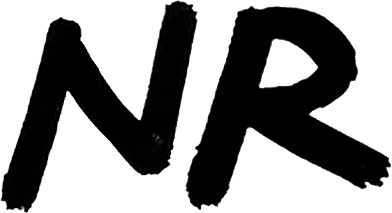VOGUE RUNWAY: Gosha Rubchinskiy Spring/Summer 2018 Review
January in Kaliningrad this was not. Despite being, geographically, a mere 513 miles to the northeast, this was far, far from the westernmost Russian city where Moscow-born Gosha Rubchinskiy showed his Fall 2017 collection. St. Petersburg in summer’s ascent is sublime: Surging rivers ribbon their way through the old streets, the teal-and-gold livery of the Winter Palace gleams under a sun that scarcely sets, and lilacs pierce the open-air paths of Isaakievskaya Ploshchad. It is fantastical in scale, library thick in lore, and crisp despite the humidity from the nearby Gulf of Finland—enough to partially cure, say, the hangover of a red-eye haul from New York to Helsinki followed by a cramped puddle jump to Pulkovo Airport.
Of course, St. Petersburg is a city with much greater and grander a history than Kaliningrad. Rubchinskiy was particularly interested in its somewhat more recent legacies of two divergent categories: football and electronica. Regarding football, it is acknowledged that soccer first took hold in Russia via St. Petersburg. During the late 19th century, British merchants began to popularize the sport here. It was the Brits who founded Russia’s very first football association, the St. Petersburg Football Club, in 1879. The Russians followed in 1897 with their own official debut group: the Kruzhok Liubiteley Sporta, or, translated, the “Circle of Sport Lovers.” Fast-forward 121 years, and Russia will be hosting the 21st FIFA World Cup in 2018. The event has inspired Rubchinskiy to bring his collection home and ink a collaboration partnership with Adidas, which debuted in Kaliningrad and carried on this evening in St. Petersburg. Next season will also be shown in Russia, in a yet-to-be-decided city—though, the designer admits, it won’t be Moscow.
As for electronica, Rubchinskiy is an ardent fan of Timur Novikov, the artist and Warholian peterburzhec credited with creating the first Russian rave just before the USSR’s collapse. Tonight’s show venue—the Communication Workers’ House of Culture on Bolshaya Morskaya Ulitsa—reportedly hosted St. Petersburg’s first-ever such event in 1989. Rubchinskiy picked the spot to invoke the “ghosts” of revelers past—an especially freewheeling, experimental crowd partying deep into the fading (and post-) Soviet night. “Football, music, nightlife, fashion—all help to unite people,” said Rubchinskiy, borderline reverentially, of his broader thinking.
The clothes, self-described as a “mix of sportswear with a nightclub rave feeling,” managed to blend Rubchinskiy’s fountainheads effectively; this collection had significant range and guaranteed general appeal, despite its subtly (but specifically) anthemic notes to its host city. This is the designer’s most valuable strength: He has, more acutely of late but throughout his nine-year career (yes, he’s been in business that long), used Russia as source material but given it a salable, globally naïf lean. Just don’t call it the “Eastern Bloc look,” anymore (more on this in a moment).
Rubchinskiy unveiled yet another collaboration, this time with Burberry, to pay respects to the football “heritage” the British instituted so very long ago. (This aspect also further added to the more tailored and dressier elements that first surfaced last season.) Burberry’s Christopher Bailey sat smiling in the front row. The best in the series was a bichrome trench, half khaki and half black, with the house’s signature tawny plaid lining its collar; perfectly Burberry, perfectly Gosha. The Adidas linkup provided full kits, ready for the pitch, replete with shin guard socks as well as strappy new sneakers. And the clubbier pieces included acid-bright tops with sicko sicko ’90s iconography and motifs (including a great reworking of Rubchinskiy’s name in Cyrillic), hot pink track pants, barely there tanks, and even a flak vest with room for a water bottle—for when morning inevitably rolls around but the party is still going. There were also hats made by Stephen Jones for Burberry for Rubchinskiy, including a baseball cap, as well as a collaboration with Retrosuperfuture on throwback shades. (Sometimes one couldn’t tell the difference between the main line and a collaborative branch—not that that’s a bad thing, as all of it looked good together.) Laughing, Rubchinskiy said: “There’s a lot of collaborating, but it all tells the story.”
A story that was, at the end of the white night, pretty damn convincing. This was an energized Rubchinskiy—maybe even optimistic—and while it meandered from direct sportswear to mismatched striped or plaid suiting (sometimes with a smart double-belt styling trick), it felt confident and it felt current. Yes, the raving bits were based on a post-Soviet headspace, but generally, the Rubchinskiy look is now something a bit less nail-on-the-head and a bit more freewheeling: Kids will be kids, no matter where they are in the world, and if they want to wear neon track pants and a batwing hoodie, they’re going to say fuck off if you tell them otherwise. And that’s, essentially, the message: There was a lot of spunk and grit—pride, really—in this collection, and it was well earned.

